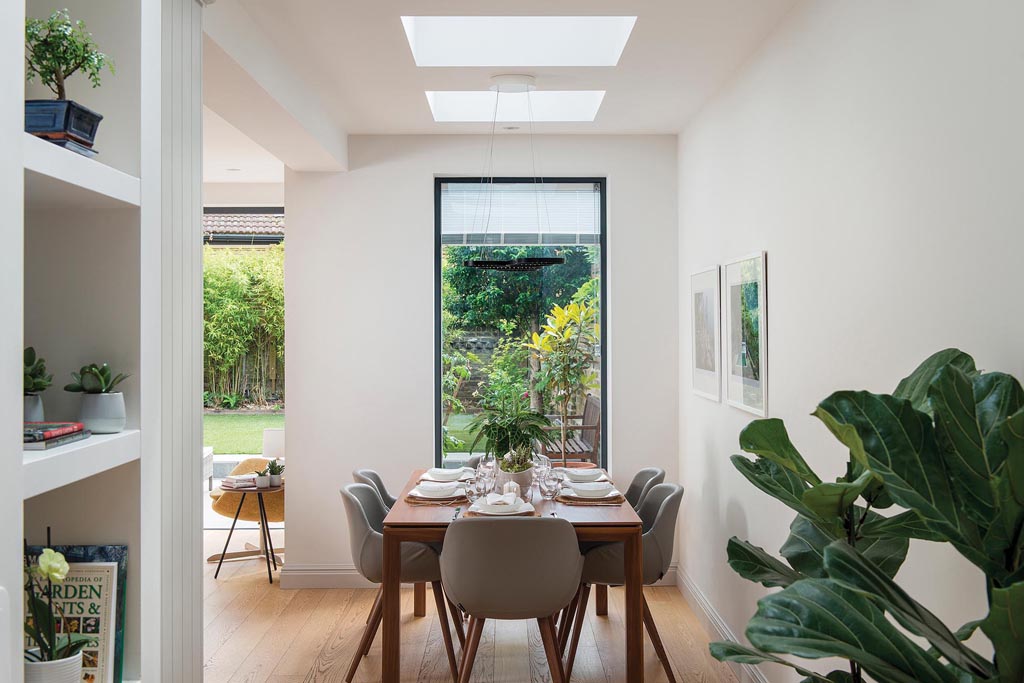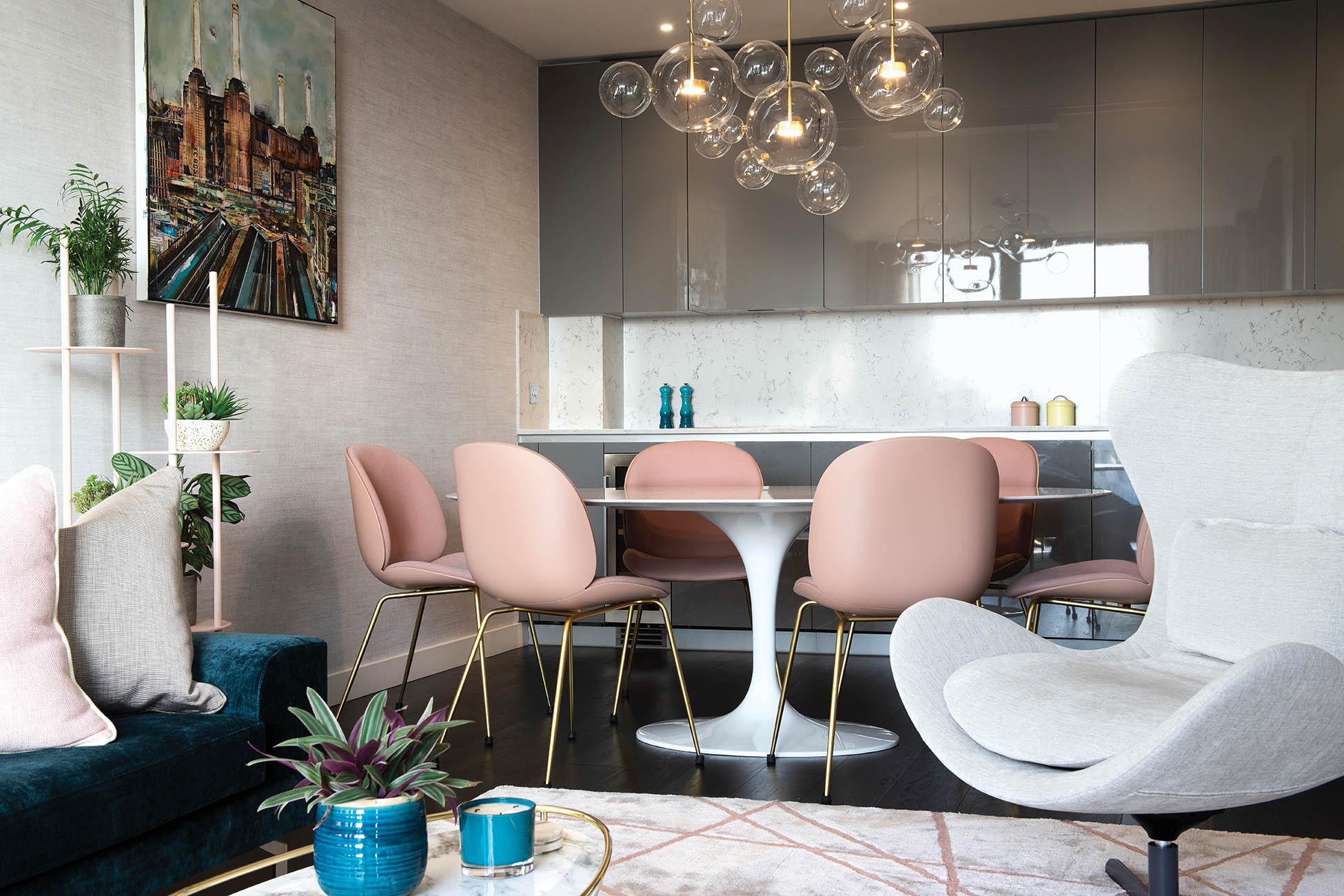Get Inside Design
Insights into the world of interior design - straight to your inbox.
Why biophilic design is more relevant now than ever before
Many of us know that biophilia is the love of nature, but what is ‘biophilic design’? And why is it important, especially now?
Up to 100 years ago, 90% of our time as humans was spent outdoors. We were attuned to nature. Now, our home and work environments are artificial and, due to the Corona virus, we are being forced to spend almost all our time indoors. But as humans, our hearts still beat to nature's drum and we crave those connections. This is where biophilic design can help.
Biophilic design has, at its heart, the twin goals of creating these connections with nature indoors and, in so doing, improving our sense of wellbeing. The term is often linked with the use of plants indoors, but it is in fact an umbrella term for a myriad ways in which design can improve one’s wellbeing, through colour, texture, pattern, lighting, sound and scent. There has been a lot of research showing that by using these means to echo nature in our homes and work places, we can improve our sense of wellbeing.
"After all" says Cinzia "modern life is stressful. In fact, most of us spend too much time indoors sat in front of screens. So, biophilic design helps us reconnect with nature and the outdoor environment – which in turn boosts happiness and health. The advantages can be physical, too. Biophilic designhas been shown to increase productivity and lower blood pressure. In addition, several studies have also highlighted the connection between biophilia and mental health."

At her practice, Cinzia and her team take pains to delve into the psychology behind their clients' projects to makes sure that every design solution they propose supports the psychological outcome desired. Design choices will be led by the “emotional task” which the room in question needs to perform. An office space, for example, will require very different energy/mood to a bedroom or a playroom.
Colour and texture
At the start of a project, Cinzia categorises her clients as Spring/Summer or Autumn/Winter according to the important places in her their life and the colours and textures which they evoke. A recent client we introduced to Cinzia, who hailed from New Zealand, turned out to be a definite Autumn/Winter candidate due to her love of her home country's landscapes. Being a Sicilian, Cinzia’s own affinities lie with very much warmer colours and textures.
According to Cinzia "natural materials such as wood, stone, granite, marble, bamboo, rattan and cork are an easy way to embrace biophilic design" adding "after all, they are naturally tactile, and evoke a sense of warmth and welcome that is often missing with synthetics."
Light and smell
What we smell in our workplace and at home has a huge impact on how those spaces makes us feel. Advances in technology mean that one can now have specific scents automatically diffused at different times of the day, in different rooms. But the first step is working out which scents you have an affinity towards. Moretti offer an “olfactive itinerary’ enabling their clients to sample a range of scents which they then have mixed to create bespoke scents for different rooms.
Lighting
Lighting is also very important. Our circadian rhythm runs deep within our psyche, and factoring this into the configuration of a space is essential. This rhythm, which represents the physical, mental, and behavioural changes we undergo each day following a cycle, is usually related to light and dark - a prime example of this is sleeping at night and being awake during the day. So the first task is to find out how light travels across the space and then take this into account when determining the optimal configuration. For example, ideally one would position the kitchen so that it benefitted from morning sun but if this were not possible, Moretti would design a lighting scheme to mimic this as closely as possible.
Plants
Research suggests they living plants improve air quality by reducing carbon dioxide, dust and other pollutants. In fact, it is said that they can even alleviate headaches and boost general feelings of wellbeing. So incorporating plants into your interior is an easy and cost effective way to improve your environment. But if you can't have living plants, there are other solutions: Cinzia tells me about a recent project she undertook in South West London. Her client had a great affinity to nature but was not confident looking after indoor plants, so Cinzia used colours, textures and patterns to mimic greenery, as well as products such as a glass, bubble shaped chandelier which echoed water and light.
Water features
Introducing some form of water feature into an interior is a proven way to counter stress. The physical health benefits are said to include lower blood pressure, a lower heart rate, improved memory and feelings of peace and tranquillity. However, as Cinzia points out, "a full-blown fountain in your home might not be too practical." so they have thought of other ways to introduce a water-like element such as water wall cascades, or custom rain curtains and LED technology to simulate a soothing water-inspired experience.

Biodesign tips
Here are some of Cinzia’s tips on how you can improve the biophilic design of your home:
- When you are stationary (working/studying/reading), position yourself as close to natural light as possible
- Add greenery to create the connection with nature, whether this is from real plants and flowers or the use of shades of green in wall treatments/textiles/objects.
- Consider the quality of light given off by the bulbs you are using - is this a warm, yellow light or a cold, blue light? How does it make you feel?
- Try to find images of rooms which make you feel the emotion you are looking for and see if you can emulate them in your own home through layout/ lighting/ colour/ accessories.
- Consider whether you are more attracted to a seaside view, mountains or the countryside. Once you have chosen, try and bring in elements of that scenery. For instance, if you like the seaside try to introduce the sound of water, the colours of the sea, and soft fabrics like linen.
To get in touch with Cinzia Moretti: https://morettiinteriordesign.com/
To find out if Cinzia might be the right interior designer for your project, please contact us.

